When it comes to soundproofing your home, the garage is probably the last place you think of; after all, the space is primarily used to park vehicles and to store lawn and garden equipment, tools, outdoor toys, holiday decorations, and other not-so-frequently used items.
However, some people use their garages for more than storage; for example, if you’re in a band, you may use it to practice, if you like to work with your hands, you may use it as a workshop, if you work on cars, you may use it as your home-based auto improvement shop, or you may even use it as a home office.
However you use your garage, noise may be an issue. Garage doors contain several gaps, which allow the panels to move so you can open and close the structure. Soundwaves can easily travel through those gaps, allowing exterior noise to enter your garage and interior noise to travel out.
If noise is an issue in your garage, there are some simple ways that you can block the sound, creating more peace and quiet on both sides of the door.
Two of the primary reasons why you might want to soundproof your door include:
For example, if you use your garage as a workshop or for band rehearsal, you may want to have as little noise intrusion as possible to distract you. Additionally, soundproofing the garage door will help to prevent loud noises from traveling outside of the space.
In addition to minimizing noise transmission, soundproofing your garage door can also help to improve the insulating qualities of the structure.
Certain strategies can help to prevent heat transfer; thus, less heated and cooled air will enter and exit the space. As such, your garage's comfort level may be increased and your utility bills may decrease.
In order to ensure you are taking the proper measures to prevent the transmission of sound, it’s first important to determine which type of noise you are attempting to eliminate, as different sounds require different soundproofing methods.
There are two primary types of sound:
The first – and most common – is airborne noise. It includes the sounds of voices, music, or power tools traveling outside of your garage and through the garage door.
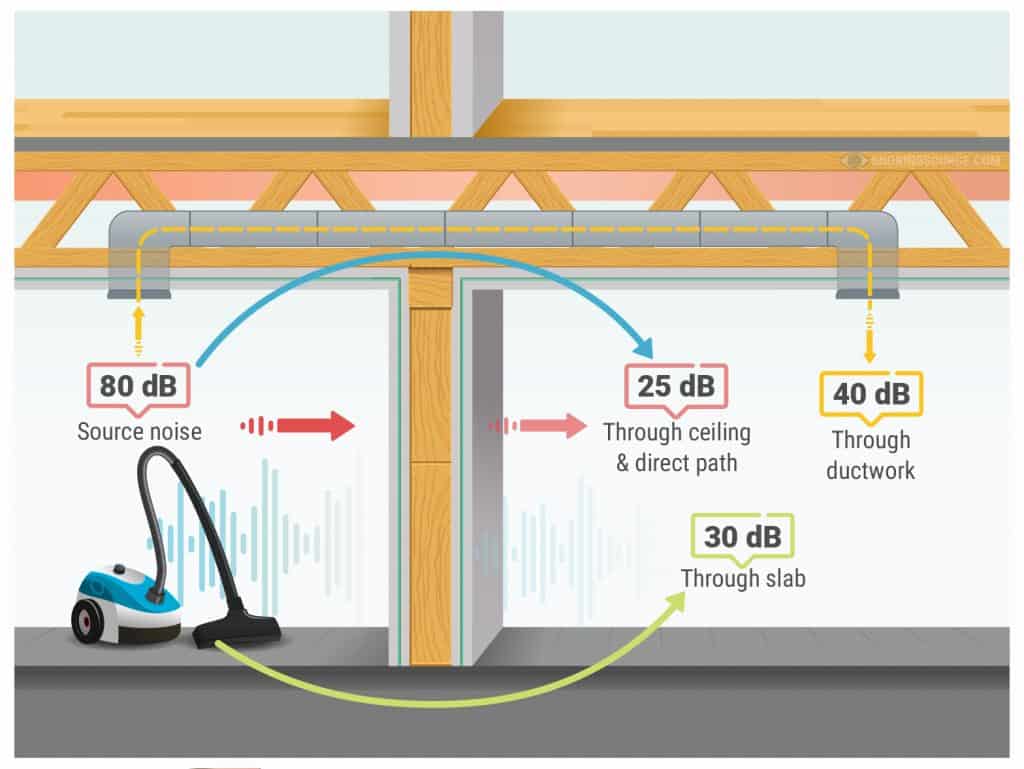
This type of sound occurs when an object makes a noise, the soundwaves the noise creates travel through air, and the soundwaves then collide with a solid object. That collision creates a vibration, which can be heard as sound.
The second type of sound is known as structure-borne noise (also referred to as structural or impact noise). Examples include the sound of knocking on your garage door or rain hitting against the door.
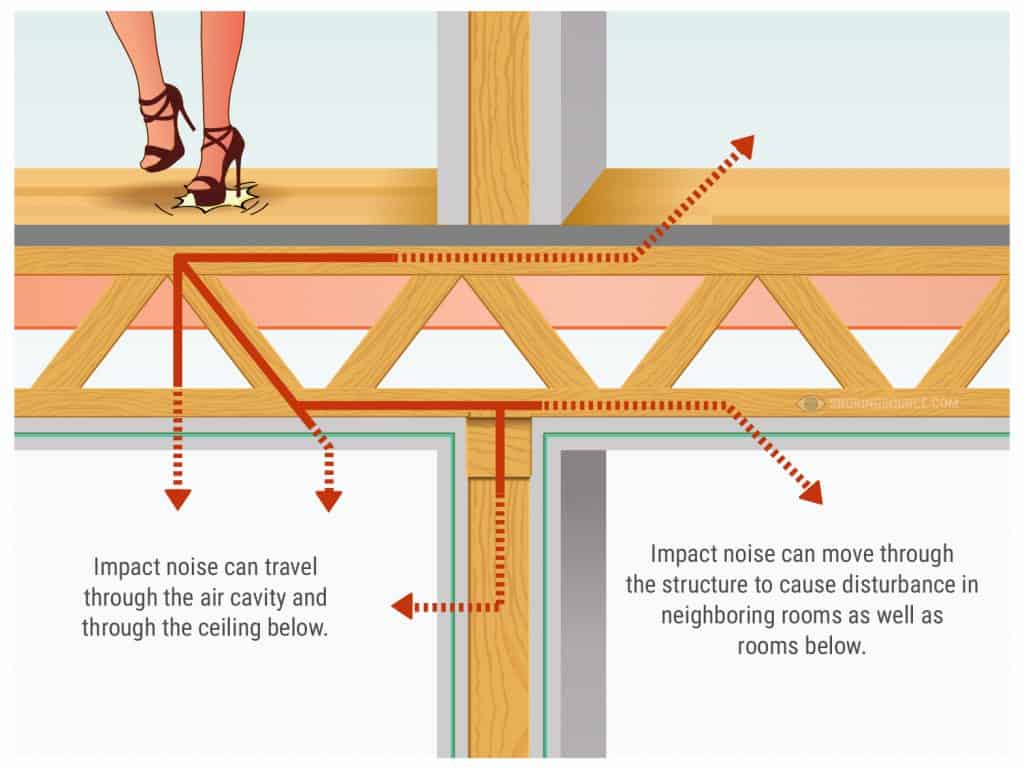
Structure-borne noise occurs when an object makes impact with solid structure; in this case, your garage door. The impact of the object against the structure creates a vibration, and that vibration is heard as noise.
To determine which type of noise you are dealing with, place your hand on the garage door when you hear a noise that you would like to eliminate.
If you feel a vibration associated with that noise, then the sound is structure-borne. If you don’t feel a vibration and you still hear the noise, it’s airborne.
Once you have determined which type of noise you are trying to eliminate, you can take measures to prevent soundwaves created by the source from passing through your garage door.
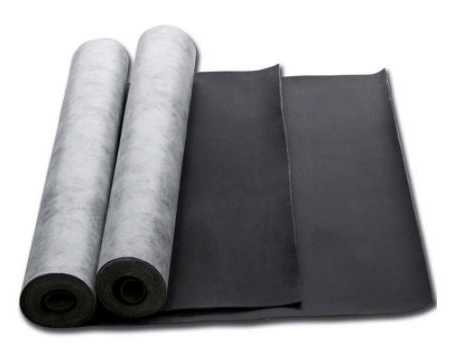
Typically, garage doors aren’t insulated; they’re either solid or hollow structures. By adding a layer of insulation to the door, you can effectively block and absorb sound.
There are several types of soundproofing materials that you can use to insulate your garage door; however, perhaps the easiest and most effective option is mass loaded vinyl (MLV).
Measure your garage door and cut the material so that it measures the same size as the door. Apply the mass loaded vinyl to the garage door, using green glue adhesive to secure it in place.
In lieu of mass loaded vinyl, you could use sound deadening blankets to soundproof your garage door. These blankets are made of dense materials that absorb and deflect soundwaves.
You’ll need to make sure that you purchase enough blankets to completely cover the door. Apply green glue adhesive to the surface of the garage door and then place the blankets over the adhesive to secure them in place.
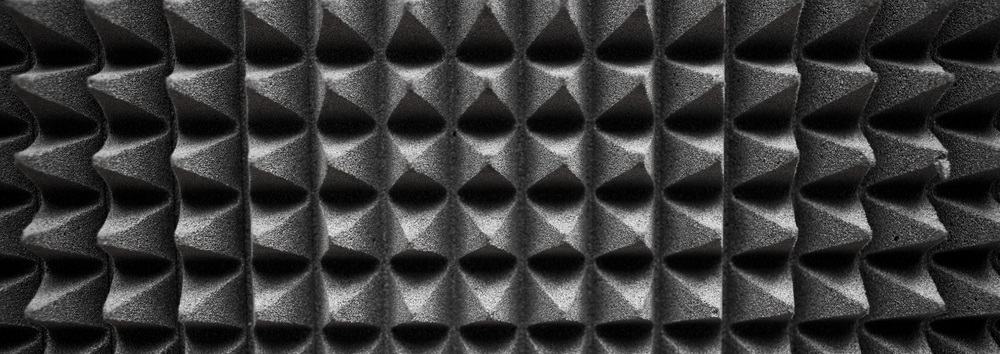
If you’re looking to prevent sound from exiting your garage and you want to improve the acoustics inside the space, try installing acoustic foam panels over your garage door.
Soundwaves bounce in and are absorbed by the acoustic foam, which minimizes vibrations, thus helping to prevent sound from traveling out of the door and also improving the acoustics within the space itself.
Make sure you purchase enough acoustic foam panels to cover the surface of your garage. Apply spray adhesive or green glue to the back of the panels and set them in place. If you need to cut the material to fit the door, make sure to take any necessary measurements first and then use a utility knife to cut the material to size.
Garage doors contain a lot of gaps. These gaps allow airborne noise to easily pass through the garage door, thereby allowing interior noise to escape the garage and exterior noise to enter the space.
In order to seal the gaps along the bottom of the door, install weather stripping. There are various types of weather stripping available, and they can be purchased at online retailers and home improvement centers.
To apply the weather stripping, simply remove the protective strip that covers the adhesive backing and apply the adhesive side of the weather stripping along the bottom of the door.
For gaps that are located along the top and sides of the door, you can use a garage door seal kit. These kits feature “fin-like” devices that are constructed of vinyl material and can be easily installed along the tops and sides of the garage door.
In addition to blocking out noise, sealing the gaps in your garage door will also help to prevent drafts from traveling through the structure, thereby improving the comfort of the space and improving the energy efficiency of your garage.
While the above-mentioned methods are highly effective, they will prevent you from using your garage door. If you still need to open and close the structure, consider the following:
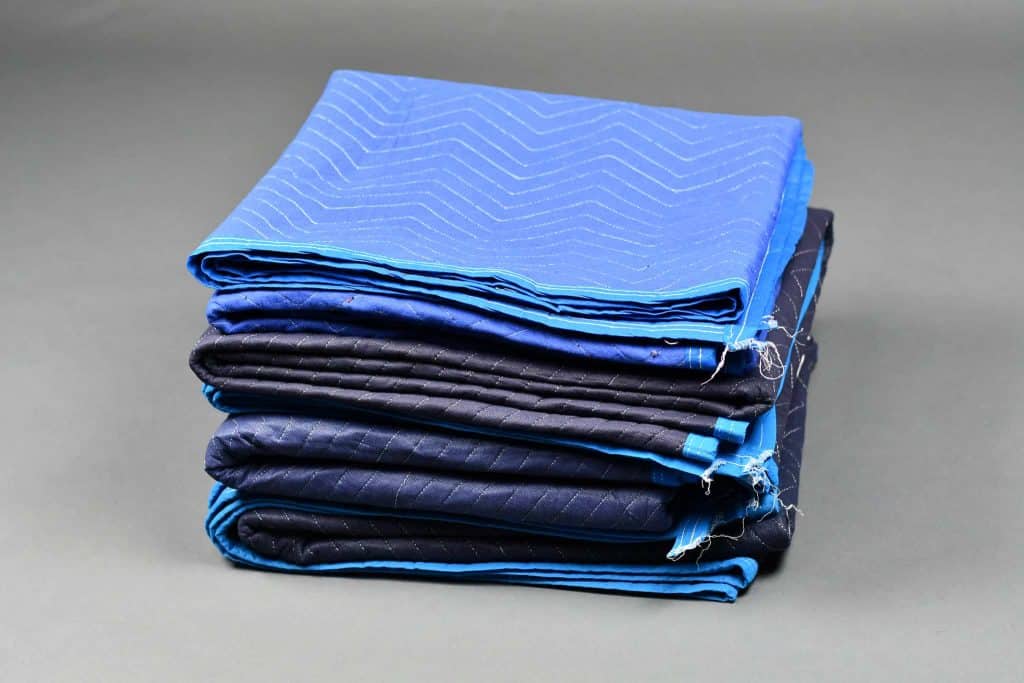
We discussed using sound deadening blankets to insulate your garage door; however, the method previously discussed requires using adhesive to secure the material in place. If you still need to open and close the garage door, instead of adhering the blankets, drape them over the door.
Hang curtain rods over the garage door drape the sound deadening blankets from them. When the door is closed, you can pull the drapes closed to block out sound. When you need to open the door, you can open the drapes for easy access.
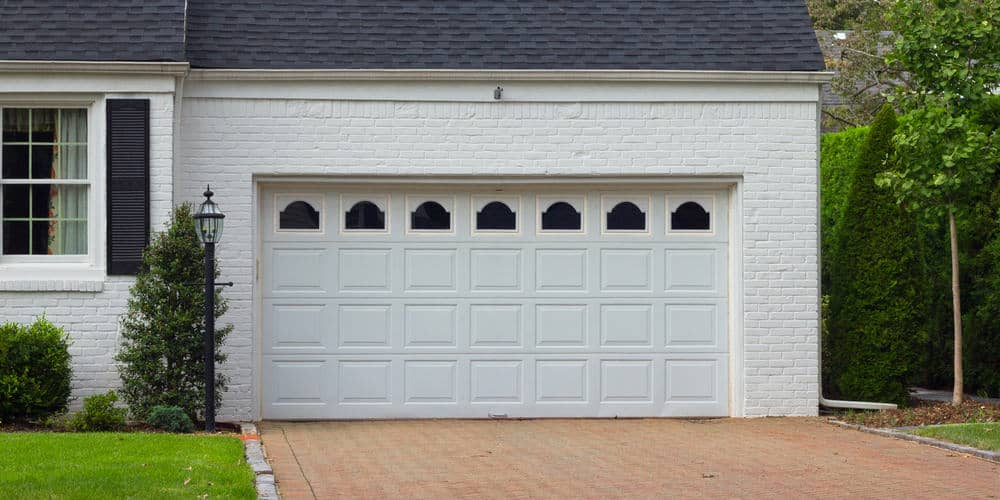
Another option to prevent sound transmission is to replace your existing garage door with one that is insulated. As previously discussed, garage doors are usually solid or hollow structures, which means that soundwaves caused by both structure-borne and airborne noise can easily travel through them. To prevent this from happening, you can install an insulated garage door.
An insulated garage door, as the name suggests, contains a layer of insulation between the front and back panel. The insulation absorbs soundwaves, which will help to reduce the level of noise that travels through your garage.
If you are planning on installing an insulated garage door, make sure that you take all necessary measurements before purchasing one. Additionally, you’ll want to take all necessary precautions when removing your existing door and installing the new one.
If you don’t feel confident in your abilities, you may want to consider hiring a professional to do the job for you. Doing so would secure your safety and ensure that the job is done the right way.
Soundproofing a garage door will help to reduce the amount of noise that both leaves and enters the space. The technique you use depends on the type of noise you are trying to eliminate and whether or not you intend on using your garage door after it has been soundproofed.

Snoringsource.com is a participant in the Amazon Services LLC Associates Program, an affiliate advertising program designed to provide a means for website owners to earn advertising fees by advertising and linking to amazon(.com, .co.uk, .ca etc) and any other website that may be affiliated with Amazon Service LLC Associates Program.